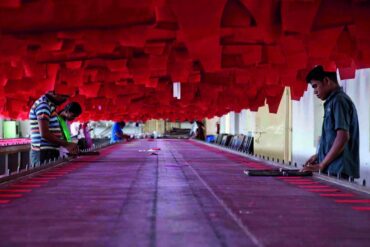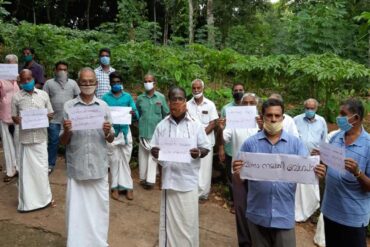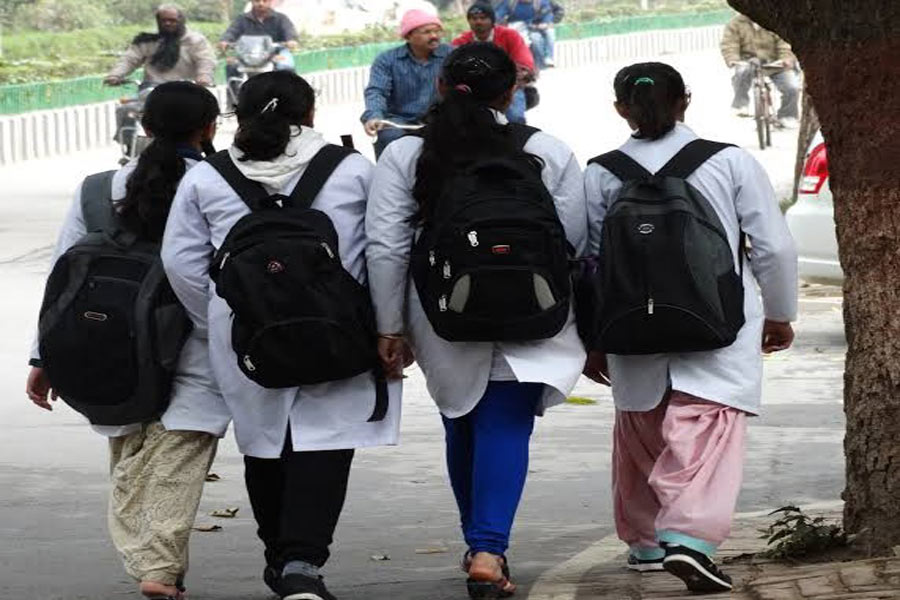Educational loans have caught large sections of South Indian youth in a debt trap and the problem is so acute that even if the recipients manage to repay the loans, they suffer life-long consequences, from which there is no easy escape.
The problem is particularly bad in the case of Kerala, with its high rate of literacy, where the aspirational value of education as a means of securing a better life is much stronger compared to many other states. Kerala also is one of the most exemplary examples of how education and certain professions have lifted whole communities out of the social and economic hierarchy.
It is no wonder, therefore, that Kerala accounts for the largest disbursement of educational loans by banks and financial institutions for any single state. Over half of total educational loans in India are disbursed in South India, according to rating agency Care Ratings; and Kerala and Tamil Nadu together account for 36 percent of all outstanding educational loans in the country, which gives an idea about the high dependence on bank finance for education in the two states. About 95 percent of the loans are provided by the public sector banks under priority lending, with State Bank of India leading the pack by far.
Higher education in technical and professional fields, including vocational courses, entails higher fees as compared to general education. A majority of colleges in India are privately managed and they charge exorbitant fees for their courses. The estimated enrolment in higher education is 3.5 crore students of which 1.9 crore are boys and 1.6 crore girls. The Gross Enrolment Ratio (GNR) in higher education in India is 25.2 percent for 2016-2017, which is calculated for the age group of 18-23 years.
As per the National Sample Survey Report 2014, the average annual expenditure on technical/professional and vocational education was about 9 times and 4 times respectively of the cost of general education. The survey further showed that the average annual expenditure for these courses in private colleges, both aided and unaided, varied between 1.5 and 2.5 times of government institutions.
The rising costs of obtaining a college degree have meant that for many students the only way to finance their education is to seek student loans from the banks. Students from lower socio-economic background are more likely to access bank finance, considering the costs associated with higher education.
The overall education loan portfolio of the banks and financial institutions is estimated to be about Rs 80,000 crore, of which scheduled commercial banks account for up to Rs 73,000 crore, followed by non-banking finance companies (NBFC) with Rs 5,000 crore and co-operative banks with up to Rs 2,000 crore.
The education loan scheme was introduced by banks in 2001 for facilitating higher education for poor and meritorious students. Initially, the scheme covered students pursuing higher studies in India as well as abroad, with a maximum ceiling of Rs 7.5 lakh within the country and Rs 15 lakh for overseas studies. Currently, education loans up to Rs 10 lakh are eligible to be classified as priority sector loan, irrespective of the sanctioned amount. The maximum loan portfolio is within Rs 5 lakh category indicating that majority of the portfolio is unsecured in nature.
Due to various factors, some of which may be beyond the control of loan-takers, there is a large percentage of delinquency in repayments. In many cases, delays in securing employment after completion of studies force the recipients to default on payment.
The total value of non-performing loans (NPA) for the public sector banks in the education sector has grown from Rs 3,536 crore in March 2015 to Rs 5,192 crore in March 2017 spiking the NPA ratio to 7.67 percent in 2017-18 from 5.70 percent in 2015-16. While the problem of higher delinquencies is countrywide, the two states of Kerala and Tamil Nadu that account for a higher proportion of loan portfolio also show higher delinquencies.
As per data presented at the State Level Bankers Committee meeting, Kerala and Tamil Nadu showed problem loans as exceeding 10 percent as compared with the overall delinquencies at 7.67 percent at the all India level. In other states such as Andhra Pradesh, Telangana and Madhya Pradesh, this was around 5 percent. The key reason for higher delinquencies is that the majority of the loans are unsecured in nature.
The delinquencies in this segment have been higher also because these loans are funded for graduation courses, which have lower employment opportunities. The employability of graduates is supposed to be less commensurate with the financial cost of these courses.
The highest incidence of defaults occurs in nursing, accounting for over 21.28 percent of all delinquencies, followed by 9.76 percent for engineering, about 6 per cent for medical and 5.59 per cent for MBA. Kerala churns out large numbers of nurses every year, which is one of the reasons for the higher share of educational loans for the state. The more lucky ones among them manage to get jobs abroad, but a large majority struggle to secure timely employment and even if they manage, the salary levels are so poor in Kerala and the rest of the country that they find it tough to make regular repayment of their loans, often leading to default.
The problem has acquired a new dimension in the wake of the introduction of a new credit score regime by the Reserve Bank of India as part of its efforts to fight defaults in the recovery of loans disbursed by the banks in general. Known as the CIBIL score, it is arrived at after reviewing a complete record of the credit history of loan customers.
A credit score is a three-digit numeric summary of a customer’s credit history. The value ranges between 300 and 900. It is estimated that 90 percent of loans are granted for individuals with a score greater than 750. The credit information report contains detailed information on the credit an individual has availed, such as home loans, credit cards, personal loans, automobile loans, overdraft facilities and even student loans.
Every missed payment is recorded in the credit history and will remain as an adverse entry. Any mention of a settlement, which invariably occurs as a culmination of problems with repayment, completely spoils the credit history. Even complete repayment does not ensure a clean chit, unless the recipient secures the necessary closure certificate. Without proper closure, the loan will show as problematic in the records of CIBIL.
There is little awareness about this among the student community or among the parents. The real trouble starts when, once settled in life, they approach the bank for a loan, whether to buy a house, car or for a business loan. They will never be able to get a loan in their lifetime as their credit score will be shown as negative and below the levels required to be eligible for a loan.
There is an inherent contradiction in CIBIL’s approach as it applies first-world standards to third-world situations. There is a feeling that the credit rating agencies need to go back to their learning to be able to come up with solutions that are applicable to the Indian context rather than copy-paste the templates of western credit norms as there is a huge difference in awareness levels about personal creditworthiness in mature economies.
In India, the very concept of personal creditworthiness is yet to take root and it would take years of educating for people to get used to the idea. The arbitrary application of western standards has cast away large sections of Indian population from the credit market. It is a hard fact of life that our loan customers are not yet ready for the fancied western concepts of personal credit rating







